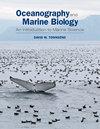Antarctic marine benthic diversity
1区 生物学
Q1 Agricultural and Biological Sciences
引用次数: 443
Abstract
Species lists have been compiled for all the major groups of Southern Ocean benthic marine invertebrates, eliminating synonymies where possible and providing a subjective estimate of completeness and reliability for each group. Antarctic marine diversity (pelagic and benthic) is relatively high at the phylum and class level, with the gaps mostly comprising minor, meiofaunal or parasitic groups. Most benthic diversity data come from the continental shelves, with relatively few samples from deeper water. Even for the continental shelves, however, sampling is highly patchy with some areas hardly investigated at all. Over 4100 benthic species have been reported from the Southern Ocean, with the most speciose groups being polychaetes, gastropods and amphipods. Comparison with tropical and temperate regions suggest that decapods, bivalves and teleost fishes are poorly represented in the Southern Ocean benthic marine fauna, whereas pycnogonids, echinoderms and many suspension feeding groups are rich and diverse. Some groups that are currently low in diversity were previously well represented in the Antarctic shallow water marine fauna, notably decapods and many fishes. Other groups have undergone marked radiations in the Southern Ocean, including pycnogonids, amphipods, isopods and teleost fishes; in all cases, however, it is only some lineages that have diversified. This indicates that evolutionary questions concerning the origin, diversification or extinction of the Southern Ocean marine fauna will have no single answer; the evolutionary history of each group appears to reflect a different response to the tectonic, climatic and oceanographic changes to which they have been subject through history. The disposition of southern hemisphere continents makes it difficult to assess whether there is a latitudinal dine in shallow-water marine diversity to mirror that known from the northern hemisphere. Within Antarctica, many species appear to have circumpolar distributions, and the long established biogeographical division into continental Antarctic, Antarctic Peninsula and sub-Antarctic regions have not been challenged by recent sampling. For most groups the frequency distribution of species per genus ratios is typical, though none is well described by the predictions from current evolutionary or null models. Where data are available, size spectra indicate that many Southern Ocean taxa are small, a few spectacular examples of gigantism notwithstanding, and species abundance plots are normal. Knowledge of the Southern Ocean benthic marine fauna has reached a stage where we can now ask powerful evolutionary questions, and the development of new molecular techniques provides the mechanism for answering them.南极海洋底栖生物多样性
已经为南大洋底栖海洋无脊椎动物的所有主要类群编制了物种清单,在可能的情况下消除了同义词,并对每个类群的完整性和可靠性提供了主观估计。南极海洋(远洋和底栖)在门和纲水平上的多样性相对较高,间隙主要由小型、小型动物或寄生类组成。大多数底栖生物多样性数据来自大陆架,相对较少的样本来自较深的水域。然而,即使是在大陆架上,采样也非常不完整,有些地区几乎没有调查过。据报道,在南大洋发现了4100多种底栖动物,其中种类最多的是多毛类、腹足类和片足类。与热带和温带地区的比较表明,南大洋底栖动物区系中十足类、双壳类和硬骨鱼的数量较少,而锥虫类、棘皮类和许多悬浮捕食类则丰富多样。目前多样性较低的一些类群以前在南极浅水海洋动物群中有很好的代表性,特别是十足类动物和许多鱼类。其他类群在南大洋也经历了明显的辐射,包括锥足类、片脚类、等足类和硬骨鱼;然而,在所有情况下,只有一些血统多样化了。这表明,关于南大洋海洋动物的起源、多样化或灭绝的进化问题将没有单一的答案;每个种群的进化史似乎都反映了它们对历史上所受的构造、气候和海洋变化的不同反应。南半球大陆的分布使得很难评估在浅水海洋多样性中是否存在与北半球已知的纬度变化相对应的变化。在南极洲,许多物种似乎具有环极分布,长期建立的南极大陆、南极半岛和亚南极地区的生物地理划分并未受到最近采样的挑战。对于大多数类群来说,每属物种比例的频率分布是典型的,尽管目前的进化模型或零模型的预测没有一个能很好地描述。在有资料的地方,大小光谱显示许多南大洋的分类群都很小,尽管有一些巨大的例子,物种丰度图是正常的。对南大洋底栖海洋动物群的了解已经达到了一个阶段,我们现在可以提出强有力的进化问题,而新的分子技术的发展为回答这些问题提供了机制。
本文章由计算机程序翻译,如有差异,请以英文原文为准。
求助全文
约1分钟内获得全文
求助全文
来源期刊
自引率
0.00%
发文量
0
期刊介绍:
With increasing interest in the field and its relevance in global environmental issues, Oceanography and Marine Biology: An Annual Review provides authoritative reviews that summarize results of recent research in basic areas of marine research, exploring topics of special and topical importance while adding to new areas as they arise

 求助内容:
求助内容: 应助结果提醒方式:
应助结果提醒方式:


